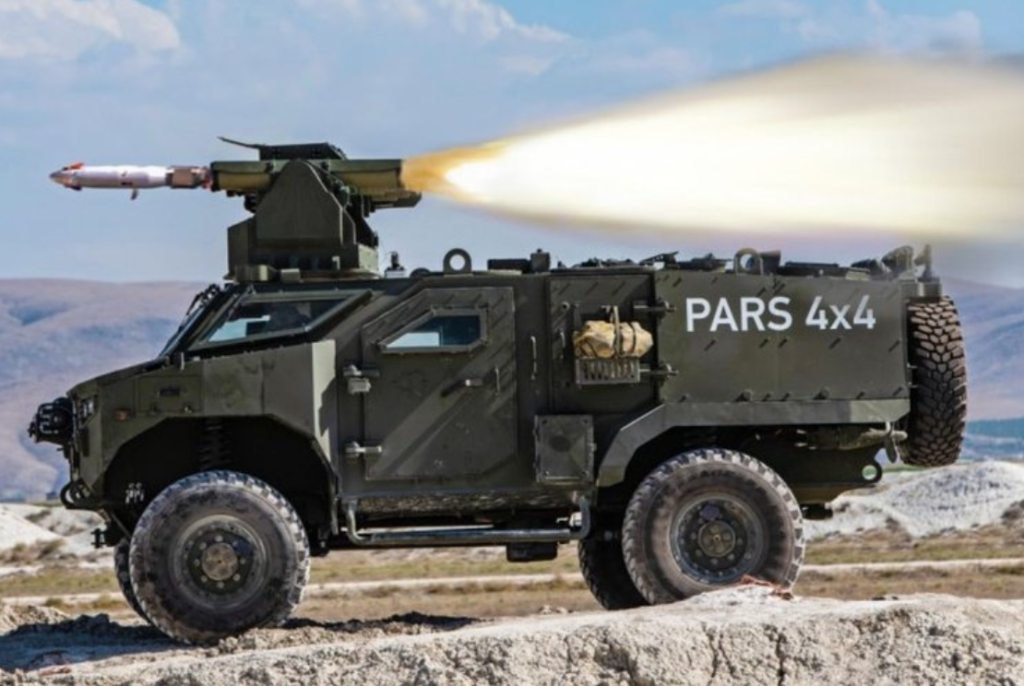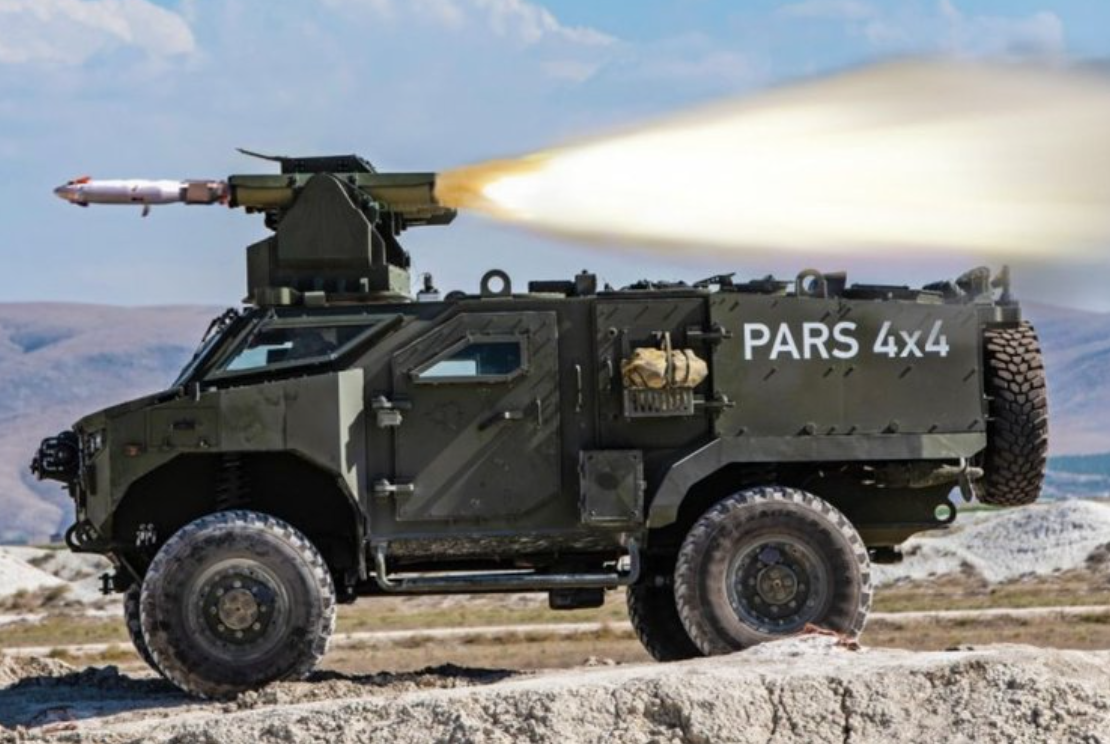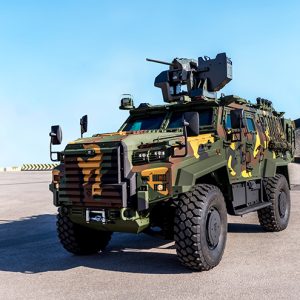Arming infantry fighting vehicles (IFVs) and armoured personnel carriers (APCs) with anti‑tank guided missiles (ATGMs) has surged back into fashion. The obituary for dedicated tank destroyers was written a decade ago as long‑range missiles, loitering munitions and uncrewed aerial systems (UAS) promised to make specialist platforms redundant. Yet many armies are now adding podded missiles to combat turrets, creating a distributed “tank killer” layer that rides with the infantry. This article tests the logic: Does integrating missiles on IFVs actually improve combat power once cost, training, doctrine, and survivability are factored in? In short: sometimes—but not for free. The IFV tank killer debate is back.
From bespoke tank busters to distributed anti‑armor
Classic, single‑purpose tank hunters have largely retired. In their place, forces are spreading anti‑armor effects across existing fleets, avoiding a separate vehicle type and logistics tail. The U.S. Bradley M2 long ago set the tone with its twin‑TOW launcher alongside a 25 mm cannon. France’s new Jaguar pairs a 40 mm CTAS with an elevating pod of MBDA Akeron missiles, returning to the cannon‑missile mix after decades. Germany’s Marder received MELLS/Spike LR, while Puma integrates a twin‑EuroSpike pod on its remote turret. Türkiye fielded both wheeled and tracked dedicated anti‑tank carriers—FNSS Pars 4×4 and Kaplan‑10—each mounting a stabilized, all‑electric remote turret that can take Kornet‑E or Mizrak‑O (OMTAS) rounds. The pattern is clear: if you can’t be everywhere with a bespoke tank destroyer, distribute the effectors.
Distributed anti‑armor is a force‑design wager: more shooters in more places beat fewer specialist vehicles—provided the crew training, sensors and TTPs keep up.
Missile choices and launch platforms
For NATO armies, two families shape the conversation. First is MBDA’s Brimstone—born as an air‑launched precision weapon, but now fielded as a surface‑launched, land‑vehicle capability and even integrated on UGVs such as Milrem Robotics’ THeMIS. Brimstone offers high-speed salvos, moving-target engagement, and top-attack profiles, making it attractive as a “close combat overwatch” effector on vehicles like the Boxer 8×8 or Ajax family variants. Second is the Spike/MELLS ecosystem, with Spike LR integrated on German platforms and the Akeron MP/LP family arming French vehicles, including Jaguar.
At the lighter end, pedestal‑ or pod‑mounted TOW remains in service globally on HMMWVs and legacy IFVs, while South Africa’s Denel Ingwe found a modern home on Malaysia’s FNSS‑based AV8 Gempita fleet in the anti‑tank role. Meanwhile, uncrewed options are no longer science projects: Brimstone‑armed THeMIS concepts, and lightweight NLOS missiles on small UGCVs, are now a procurement reality.
What missiles buy—and what they cost
A turreted 20–40 mm cannon struggles against a modern MBT, especially frontally. Podded ATGMs extend lethality to 4–12+ km, enable top‑attack, and impose standoff on enemy armor. But the hidden invoice is steep: beyond missile unit cost, vehicles need precise EO/IR sensors, laser rangefinders/designators, battle‑management integration, hard‑kill/soft‑kill protection, and crew proficiency for complex engagements under EW and UAS threat. Weight and profile grow. Reloading is often external and slow; most pods carry only two to four ready rounds. Unless a formation’s doctrine allocates protected resupply and a practiced “shoot‑and‑scoot” drill, the first salvo risks being the last.
Doctrine: overwatch vs. role drift
Mounting ATGMs on IFVs tempts commanders to hunt tanks. That can degrade the IFV’s primary duty—delivering and supporting dismounts. The better doctrinal fit is “mounted close combat overwatch”: IFVs hold overwatch positions, use missiles to strip enemy overwatch armor and strongpoints, then transition to suppressive fires as infantry assaults. Specialist anti‑tank troops still matter for deliberate ambushes, long‑range NLOS shots, and deception. The sweet spot is a layered approach in which dedicated anti‑armor elements, missile‑equipped IFVs, UAS scouts, and indirect fires are orchestrated by a common data fabric.
Survivability in the drone age
Adding missiles increases signature and perceived value. In drone‑saturated battlespaces, survivability rests on mobility, low silhouette, decoys and active protection. Remote turrets like FNSS’s all‑electric ATGM mount reduce crew exposure; nonetheless, external reloads and raised pods are vulnerable to top‑down FPV attacks. Vehicle teams need SOPs for obscurants, rapid displacement within 60–90 seconds of firing, and UAS jamming bubbles where available. Hard‑kill APS sized for IFVs—scaled‑down interceptors, hemispheric coverage, and AI‑assisted threat prioritization—will decide whether “missile‑IFVs” can stick around after revealing themselves.
Case studies: what’s actually being fielded
Brimstone on Boxer/Ajax & UGVs. MBDA’s surface‑launched Brimstone is marketed for Boxer mission modules with eight‑round pods and for tracked/wheeled platforms; demonstrations with Milrem’s THeMIS show autonomous teaming potential. Ukraine’s improvised truck launchers proved land‑based Brimstone’s utility against armor and artillery in contested EW environments.
Jaguar’s Akeron pod. France’s EBRC Jaguar operationalizes the cannon‑missile pairing: two ready Akeron MP in a deployable pod (with two stowed), integrated with panoramic sights and a 40 mm CTAS for multi‑role reconnaissance and anti‑armor punch.
Germany’s MELLS migration. The Bundeswehr’s move from MILAN to Spike LR (MELLS) on Marder and Puma underscores the shift to fire‑and‑forget/top‑attack guidance and better networking.
Türkiye’s Kaplan‑10 & Pars 4×4. The Turkish Land Forces field tracked Kaplan and wheeled Pars anti‑tank vehicles with stabilized, two‑axis RCTs carrying Kornet‑E or Mizrak‑O (OMTAS). The choice to procure both tracked and wheeled variants reflects terrain and logistics pragmatism: tracks for close‑in support with tanks, wheels for rapid road‑march ambush forces.
Malaysia’s AV8 Ingwe. Denel’s ZT‑3 Ingwe on the FNSS‑based AV8 Gempita anti‑tank variant demonstrates the export appeal of modernized, vehicle‑mounted ATGMs in mid‑weight formations.
So, should you bolt tank killers onto IFVs?
A defensible “yes” hinges on four tests:
- Mission clarity. If the formation fights combined arms with UAS cueing and data‑linked fire control, IFV‑mounted missiles extend reach without hijacking the vehicle’s core role.
- Training and TTPs. Crews must practice distributed kills: laser handoff, remote designation, external reload discipline, and evasive post‑launch drills under drone observation.
- Protection and logistics. APS, smoke orchestration, and a resupply concept that keeps ammunition and crews alive.
- Cost realism. Budget not just for missiles, but for sensors, BMS integration, and lifecycle training. Otherwise, the capability atrophies after the first fielding cycle.
Done right, integrating missiles on IFVs/APCs yields a flexible, mass‑distributed anti‑armor web. Done poorly, it creates heavy silhouettes that draw fire, drain budgets, and distract from the infantry mission. The IFV tank killer can be a force multiplier—but only inside a layered kill‑chain.
Key Facts
- Surface‑launched Brimstone is offered for Boxer and other land platforms; MBDA has also demonstrated integration on Milrem’s THeMIS UGV.
- France’s EBRC Jaguar fields a 40 mm CTAS and a two‑round deployable Akeron MP pod (two more stowed), restoring the cannon‑missile pairing.
- Germany has migrated legacy IFVs to MELLS/Spike LR; Puma integrates twin EuroSpike pods on its RCT.
- Türkiye fields FNSS Kaplan‑10 (tracked) and Pars 4×4 (wheeled) dedicated anti‑tank variants with Kornet‑E or OMTAS options.
- Malaysia’s FNSS‑based AV8 Gempita anti‑tank variant mounts Denel’s ZT‑3 Ingwe, reflecting mid‑weight adoption of vehicle‑based ATGMs.
Further Reading
Internal link: Link‑16 phaseout & optical backbone
External links:
- Shephard — Smaller vehicles as tank killers (Christopher F. Foss)
- MBDA — Surface‑Launched Brimstone
- MBDA — Brimstone on Milrem THeMIS (DSEI 2019)
- Rheinmetall — MELLS (Spike LR) orders for Bundeswehr
- Army Recognition — FNSS Kaplan STA anti‑tank
- TurDef — FNSS Kaplan & Pars deliveries
- Milrem — THeMIS & Brimstone integration note
- Army‑Technology — AV8 Gempita program overview
- defenceWeb — Malaysia fires Ingwe from AV8
- Wikipedia — EBRC Jaguar (Akeron integration summary)









